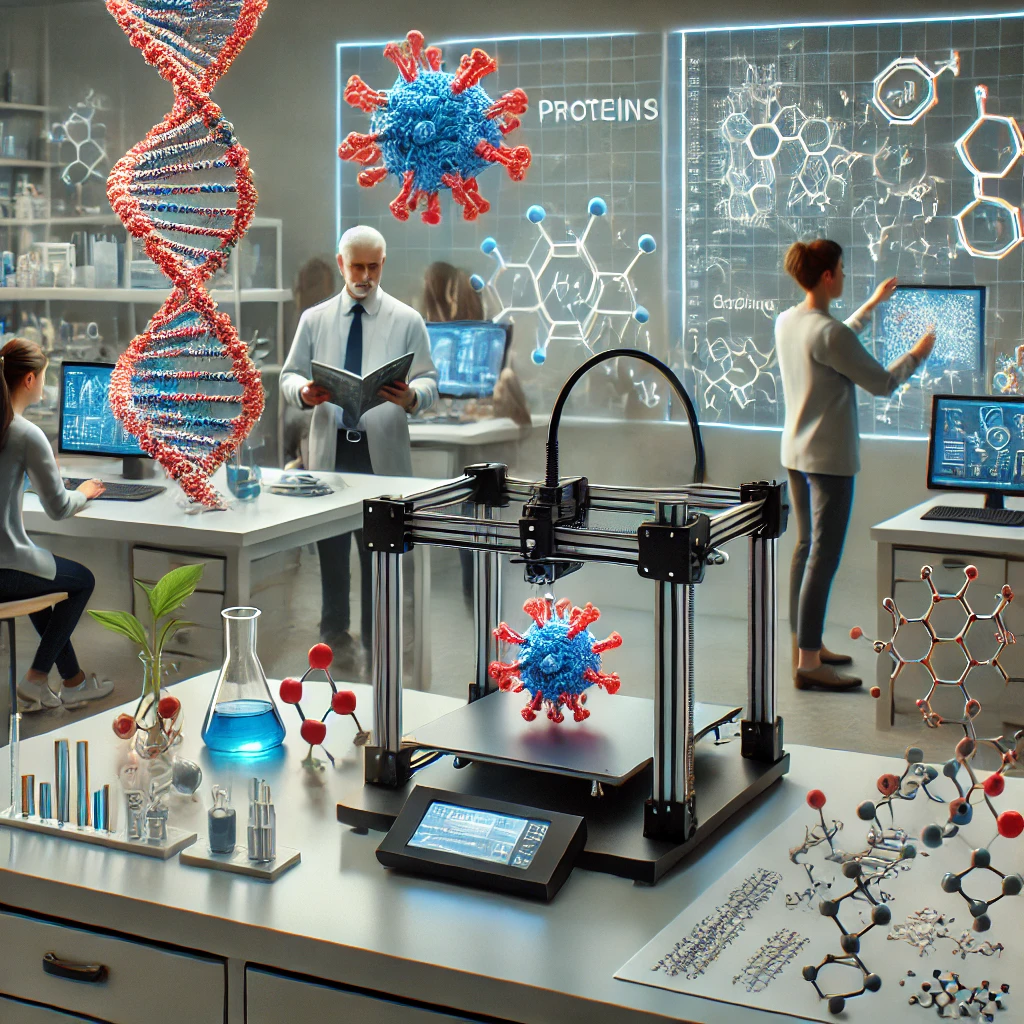
The convergence of synthetic proteins and 3D printing technologies heralds a new era in bioprinting, offering innovative solutions for various biomedical applications. The Role of Synthetic Proteins in 3D Bioprinting is crucial, as these proteins can be engineered to mimic or surpass the functions of natural proteins. This article explores how synthetic proteins are revolutionizing 3D bioprinting, focusing on their synthesis, applications, and potential future impacts.
Understanding Synthetic Proteins
Synthetic proteins, custom-designed molecules, can be tailored to exhibit specific properties and functions. Techniques like chemical synthesis and recombinant DNA technology create them. Unlike natural proteins, limited to 20 amino acids chosen through evolution, synthetic proteins can incorporate a broader range of building blocks, enhancing performance and stability.
Advances in Protein Synthesis
Recent advancements, as highlighted by researchers at MIT, have significantly accelerated protein synthesis. Traditional protein synthesis methods are time-consuming, but new technologies now enable the rapid production of synthetic proteins. This breakthrough is crucial for applications requiring large quantities of proteins with precise specifications, such as drug development and bioprinting
Simplifying Nature: Synthetic Proteins that Outperform
A study from UC Berkeley demonstrated that simpler synthetic proteins, constructed from a limited set of building blocks, can outperform their natural counterparts. By using AI to design these proteins, researchers created random heteropolymers (RHPs) that function effectively in biological systems. For instance, artificial blood plasma made with RHPs can preserve protein biomarkers without refrigeration, showcasing the potential of these materials in medical applications
3D Bioprinting with Synthetic Proteins
Synthetic proteins offer several advantages in 3D bioprinting:
- Customization: Synthetic proteins can be engineered to have specific mechanical and biochemical properties, making them ideal for creating bespoke biological structures.
- Biocompatibility: These proteins can be designed to interact seamlessly with natural biological systems, reducing the risk of immune rejection and enhancing integration with host tissues.
- Stability: Synthetic proteins can be more stable than natural proteins, making them suitable for long-term applications, such as implants and tissue engineering.
Potential Applications
- Tissue Engineering: Use synthetic proteins to print scaffolds that support cell growth and tissue regeneration. Design these scaffolds to degrade at controlled rates, providing temporary support while new tissue forms.
- Drug Delivery: Create 3D printed structures from synthetic proteins for drug delivery systems that release therapeutic agents in a controlled manner.
- Medical Implants: Customize implants made from synthetic proteins to match the mechanical properties of target tissue, improving functionality and patient outcomes.
Future Directions
The future of 3D bioprinting with synthetic proteins is promising. Ongoing research aims to improve the precision and functionality of these materials. Potential developments include:
- Enhanced Biocompatibility: Further reducing the immune response to synthetic proteins to ensure they integrate smoothly with natural tissues..
- Dynamic Properties: Creating synthetic proteins that can respond to environmental stimuli, such as changes in pH or temperature, to perform specific functions in the body.
- Scalable Production: Developing methods to produce synthetic proteins at an industrial scale, making them more accessible for widespread use in bioprinting.
Conclusion
The integration of synthetic proteins into 3D bioprinting technology represents a significant leap forward in biomedical engineering. By leveraging the unique properties of synthetic proteins, researchers and clinicians can create highly customized, biocompatible, and functional biological structures. As this technology continues to evolve, it holds the promise of transforming healthcare and opening up new possibilities in regenerative medicine and beyond.
Happy Printing!
Sources
https://news.mit.edu/2020/faster-protein-synthesis-0528
https://newatlas.com/biology/synthetic-proteins-simplify-outperform-nature
Discover more from PrintCraft.gr
Subscribe to get the latest posts sent to your email.